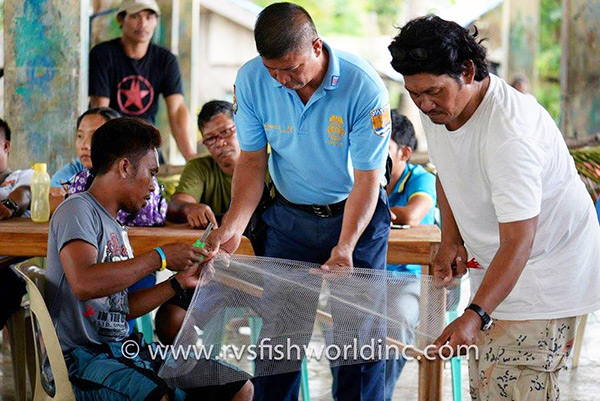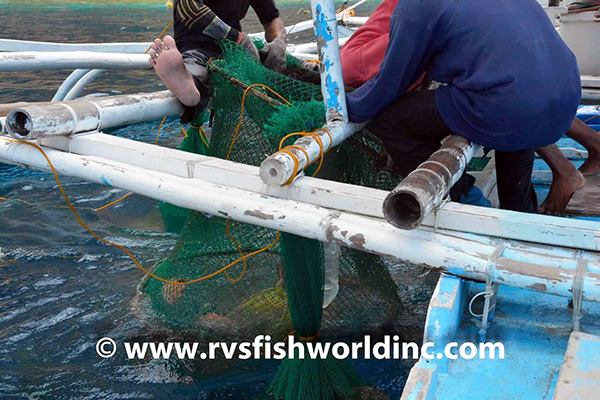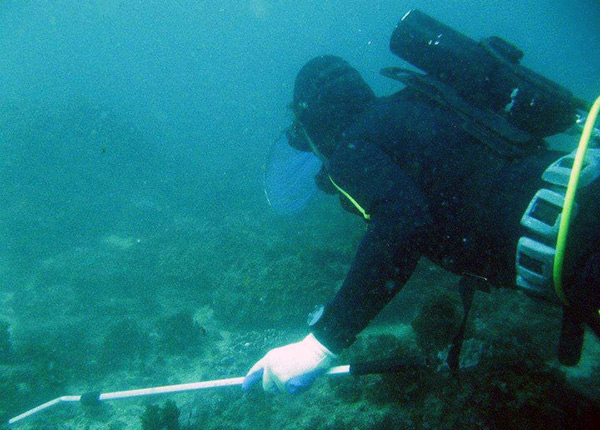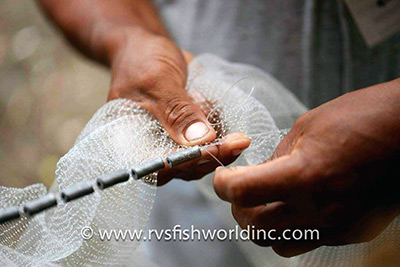The ocean is full of the unknown, allowing people’s imaginations to run wild. Combine that with film producers, writers, or groups with a divisive agenda, and you get mockumentaries entertaining the idea of a monster shark as big as a submarine, the internet claiming cephalopods are from another planet, and articles with an extremely misguided view of the marine aquarium fish trade.
Over the past several months, I have taken a stand against pure failures of journalism, vigorously commenting with factual evidence that the journalist disregarded (intentionally or unintentionally). From “Mercury Gate” to the most recent completely unsubstantiated claim that 90% of all marine fish collected today for aquarium purposes are collected with the use of sodium cyanide, these failures cannot go unchecked.
After 15 years in the hobby and 10 years within the industry, I knew that figure was fabricated before the coffee spitting out of my mouth hit the table in front of me. But let’s break this down.
Why the sensational headline is false
In a study done in 2004 and 2005, 11 million marine fish, comprised of 1,802 species, were imported into the United States. Our marine fish come from several areas (this can vary slightly today as some collectors are restricted by governments and changes in law), including Australia, Bahamas, Belize, Brazil, Canada, Cambodia, Chile, Costa Rica, Dominican Republic, Ecuador, Egypt, El Salvador, Fiji, French Polynesia, Great Britain, Haiti, Hong Kong, Indonesia, Japan, Kenya, Kiribati, Maldives, Marshall Islands, Mauritius, Mexico, Netherlands Antilles, New Caledonia, Nicaragua, Palau, Philippines, Saudi Arabia, Singapore, Solomon Islands, Sri Lanka, Taiwan, Tonga, Vanuatu, Venezuela, Vietnam, aaaaaand Yemen.
Let me catch my breath here! Out of that list, known cyanide usage for collecting purposes includes a percentage of collectors in Indonesia, the Philippines, and Vietnam (Rhyne et al. 2012). Estimates of import percentages yearly from this group of countries vary from 50% to 85%, making the claim of 90% of all imports being collected not even in the realm of possibility, even if every single fish from these countries is collected with the use of cyanide. We know that’s not the case largely because of the efforts of vendors and collectors acknowledging this method is neither sustainable nor desirable with actions against it.
As Matt Pedersen pointed out in the comments section of National Geographic’s article regarding their own citations:
…we find the following: “The Marine Aquarium Council website reports that the International Marinelife Alliance (IMA) tested 48,000 fish in the Philippines to find that 25% of aquarium fish destined for the United States and Europe, and 44% of live groupers and humphead wrasse going to Hong Kong were caught using cyanide.””
Obviously these figures are well below what Rachael Bale claimed in National Geographic’s article, and it really comes as no surprise, since 90% would mean most fish are dying days after collection and it really would be cost prohibitive for not only retailers, but wholesalers as well. As responsible aquarists, we still consider these figures unacceptable, but progress has been made regarding reducing cyanide usage. However, I’m not going to dive into the world of statistics here because, honestly, there isn’t enough data out there to make any real assertions about what is going on.
The Trailblazers who are making a real difference
Over 500 divers since 1983 have been trained to use nets in the Philippines. These fishermen now are distributed all over the globe, from the Red Sea to Fiji, with many still residing in the Philippines. Some efforts have been extremely expensive for not a whole lot of gain while others have been genuine and have gotten a lot done.

RVS Fishworld Inc., for the past 28 years, has tasked itself with starting an effort to reduce cyanide use in the Philippines by converting, training, and supplying fishermen with the knowledge and equipment for sustainable net collection, and more are being trained this year. Barnett Shutman at RVS Fishworld says he is giving nets out to divers for free and that he has divers coming by his facility four to five days per week for those nets. He also runs a coral mariculture facility and sea turtle farm to save sea turtles. A description of RVS Fishworld’s training process, the new laws, and enforcement going on in the Philippines will be featured in my next article.
RVS Fishworld is not alone. To make the global fishery as a whole more sustainable and to lower mortality, wholesalers, such as Quality Marine, put in place a series of short supply chains in various parts of the world to have better oversight and accountability over collectors. They provide equipment, various forms of expertise, and even on-the-ground training to implement industry best standards. They have vendor certifications and make routine visits, which give them confidence that their vendors are operating within the framework of their particular locality.
This is some very encouraging news coming out of the industry. New data needs to be collected, as it seems things are changing very quickly.

What about US fisheries?
The Florida Keys have been a well-managed, restricted fishery for quite some time. All fish are collected via hand and barrier nets and all catch reports are recorded by the Florida Fish and Wildlife Conservation Commission (FWC). Places like Dynasty Marine Associates, Inc. require 25-30 permits just to operate in the Keys, with 30-40 more permits needed for special collection for public aquaria.
Dynasty Marine works closely with the FWC and law enforcement in Florida. Forrest Young, the director of Dynasty Marine, has even “asked to restrict their fishery” at times when they see an unforeseen issue out in the field. They present these issues pro bono to an advisory council each month. Consequently, Young says, “the industry was the leading participant in protecting Condylactis anemones in Florida” that were greatly reduced in number—not by the industry, but by sewage and runoff of waste water. The State of Florida chose to make improvements in waste-water management, and Young reports that the reefs in Florida are also seeing improvement.
Hawaii is also a heavily managed and studied fishery. Hawaii has led efforts to have marine protected areas (MPAs) where the reef and its inhabitants must stay untouched by fishing pressure, allowing target species to breed and populate other areas of the reef.
Doing things right Down Under
Australia has the world’s most substantial network of MPAs, a patchwork that comprises a third of Australia’s waters. “All fish collectors must have a class A1 permit to collect fish,” says Ryan Goldfinch, Director of Queensland Sustainable Sealife PTY LTD. “The licenses are owned by the operator, and the government does not issue new licenses. This limits the fishery because only about 50 licenses exist in total.” He adds that if fishermen are operating in the Great Barrier Reef Marine Park, they also need a special permit for that.
While collecting, fishermen must log the date, dive location, duration, and number of divers in the water, with a maximum of three. They must log each fish collected by species. Everything is net caught. To use anything else is illegal. If collectors do not keep to the regulations, they risk losing their license (which costs around $150,000).

Where things go wrong
The waters get muddy with the roving fishermen in the Philippines and Indonesia, where divers may be doing several things to survive—collecting both food and ornamental fish and possibly providing other services. The divers may sell their catch to a middleman, and that middleman takes their catch to another collection point where it is given to another middleman, and so on, until the catch makes it to an exporter. When fish exchange hands many times, there are fewer guarantees that you have clean fish that have been harvested legally. The responsible wholesalers in the U.S. have made a huge effort to avoid these situations with short supply chains.
A more sustainable hobby
We cannot ignore the efforts of marine breeders across the globe to curb our impact on the oceans. Just in the last decade, great strides have been taken with the captive breeding of the first tang, angelfish, wrasse, and anthias. Our ceiling has only gotten higher as people get more and more skilled at aquaculturing marine fish. Efforts such as the Marine Breeders Initiative, Rising Tide Conservation, Bali Aquarich, Sustainable Aquatics, and Oceans, Reefs and Aquariums have all been an amazing success, but there is definitely more work to do on all fronts!
In the end, yes, we need a concentrated effort to record and analyze data coming out of the Philippines and Indonesia. Yes, we must support those who are on the ground in these countries trying to make a difference. Yes, we as an industry must support captive-propagation programs. Yes, we must be skeptical of sensational claims made by animal-rights groups and journalists who refuse to get both sides of the story. Yes, we must also fight sensationalized propaganda that could do a disservice to collectors doing the right thing all over the world by bringing value to the reef system in their country while collecting without cyanide.
If the reefs become worthless to the native people, there is absolutely no incentive to conserve them.
Photo credits: Barnett Shutman/RVS Fishworld, Ryan Goldfinch
Sources:
Rhyne, A.L., Tlusty, M.F., Schofield, P.J., Kaufman, L., Morris, J.A., Bruckner, A.W. “Revealing the Appetite of the Marine Aquarium Fish Trade: The Volume and Biodiversity of Fish imported into the United States” PLoS One. 2012; 7(5): e35808
Forrest Young — personal communication, 3-15-2016
Barnett Shutman — personal communication, 3-15-2016
Ryan Goldfinch — personal communication, 3-16-2016



